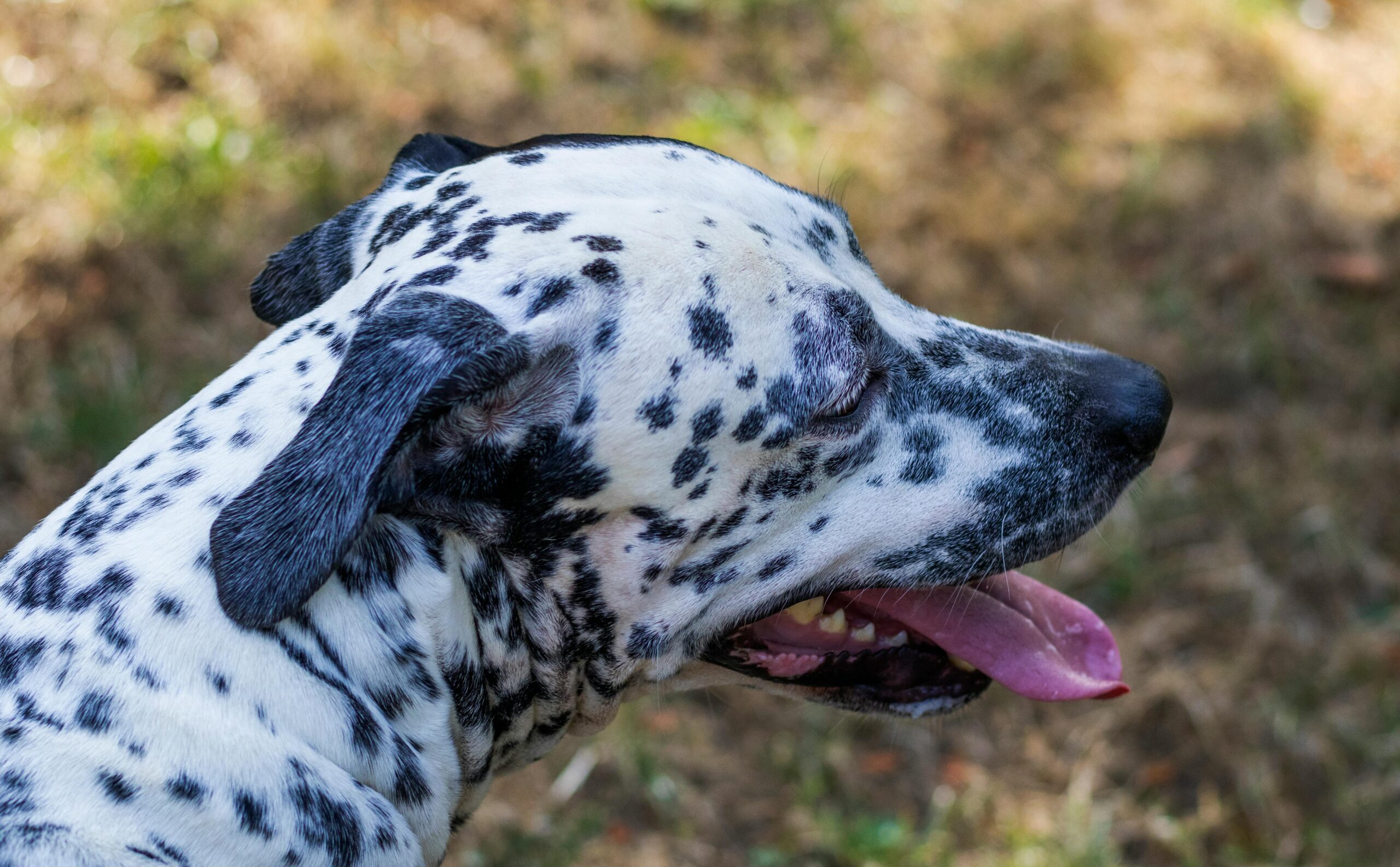If your furry friend is dealing with hot spots, you’re likely on the lookout for natural solutions to bring them relief.
In this guide, we’ll explore effective strategies on How to Stop Dog Hot Spots Naturally.
These simple and gentle approaches aim to soothe your dog’s discomfort without resorting to harsh chemicals or medications.
Let’s dive into these natural remedies to ensure your canine companion finds comfort and healing in a gentle, holistic way.
Table of Contents
Soothing Solutions: How to Stop Dog Hot Spots Naturally

1] Cool Compress Comfort
When your furry friend is dealing with the discomfort of hot spots, a quick and effective remedy is the use of cool compresses.
Take a clean cloth, dampen it with cold water, and gently apply it to the affected area.
The coolness provides instant relief by soothing inflammation and reducing itching.
Ensure the compress is not too cold to avoid any shock to your dog’s skin.
This natural and simple solution is a go-to for easing your pup’s irritation and making them feel more comfortable.
2] Aloe Vera Magic
Turn to nature’s soothing elixir, aloe vera, to provide relief to hot spots.
Opt for a natural aloe vera gel without added chemicals or preservatives.
Apply a thin layer to the affected area to harness its anti-inflammatory properties, which not only alleviate irritation but also promote the healing process.
Aloe vera is known for its cooling effect and can be a gentle and effective solution for your dog’s hot spots.
Tip: “Apply a thin layer of natural aloe vera gel to alleviate irritation and promote healing.”
3] Chamomile Infusion
For a holistic approach to hot spot relief, consider creating a chamomile infusion.
Steep chamomile tea bags in warm water and allow the mixture to cool.
This chamomile-infused water serves as a calming bath for your dog.
Chamomile’s natural anti-inflammatory and soothing properties work wonders in reducing inflammation associated with hot spots.
A chamomile bath can be a relaxing and therapeutic experience for your furry companion.
4] Coconut Oil Comfort
Harness the nourishing properties of coconut oil to provide relief for hot spots.
Gently apply a thin layer of coconut oil to the affected area to moisturize the skin and create a protective barrier.
Beyond its moisturizing benefits, coconut oil possesses antimicrobial properties that aid in preventing potential infections.
Regular application of coconut oil can contribute to the overall well-being of your dog’s skin.
Tip: “Apply a thin layer to create a protective barrier and aid in preventing infection.”
5] Oatmeal Baths
Treat your pup to the soothing goodness of an oatmeal bath.
Oatmeal’s anti-inflammatory properties help relieve itching and redness associated with hot spots.
Ensure the bathwater is lukewarm to provide maximum comfort for your dog.
Oatmeal baths are not only a natural and effective remedy for hot spots but also a pleasant and calming experience for your furry friend.
6] Tea Tree Oil Dilution
Tap into the antimicrobial power of tea tree oil for addressing hot spots.
It’s crucial to dilute a small amount of tea tree oil in a carrier oil, such as coconut oil, before applying it to your dog’s skin.
This natural remedy helps combat bacteria and soothes irritated skin.
Careful and controlled use of tea tree oil can be a valuable addition to your hot spot treatment toolkit.
• Use tea tree oil for hot spots, known for its antimicrobial power • Dilute it in a carrier oil like coconut oil before applying • Natural remedy combats bacteria and soothes irritated skin • Careful use makes tea tree oil a valuable addition to hot spot treatment.
7] Calendula Salve
Investing in a calendula salve is a wise choice for its herbal healing properties.
Calendula is known for promoting skin regeneration and providing a gentle, natural barrier against infection.
Applying a small amount of calendula salve to hot spots helps support the healing process and ensures that your dog’s skin is well-nourished.
8] Proper Grooming Practices
Prevention is key when it comes to hot spots, and maintaining proper grooming practices plays a crucial role.
Regular brushing helps remove excess fur, preventing matting and reducing the likelihood of hot spots.
Ensure your pup’s coat is clean and well-maintained, especially in areas prone to moisture buildup.
By incorporating grooming into your routine, you actively contribute to preventing the development of hot spots.
Tip: “Regular brushing removes excess fur and ensures a clean, well-maintained coat.”
9] Dietary Adjustments
Supporting your dog’s skin health from within involves making dietary adjustments.
Incorporate omega-3 fatty acids into their diet through fish oil supplements or fish-based diets.
These essential fatty acids are known for their anti-inflammatory properties and contribute to a healthy skin and coat.
A well-balanced and nutritious diet enhances your pup’s overall well-being, reducing the risk of developing hot spots.
10] Yogurt Yummies
Introduce probiotics into your dog’s diet through plain yogurt.
Probiotics play a crucial role in maintaining a healthy gut, which is directly linked to skin health.
A balanced and thriving gut contributes to a strong immune system, reducing the likelihood of skin issues, including hot spots.
Including yogurt in your dog’s diet can be a delicious and beneficial way to promote their overall well-being.
In the yogic dance of health, hot spots find no ground, and your pup revels in the probiotic embrace.
11] Avoiding Allergens
Hot spots can sometimes be triggered by allergens in your dog’s environment.
Take proactive measures by identifying and eliminating potential allergens.
Common triggers may include certain foods, plants, or fabrics.
Observing your dog’s behavior and noting any patterns of skin irritation can help pinpoint potential allergens.
By understanding your pup’s sensitivities, you can take steps to minimize exposure to triggers and prevent recurring hot spots.
12] Comfortable Bedding
The prevention of hot spots also involves minimizing friction on your dog’s skin.
Provide your pup with comfortable and hypoallergenic bedding.
Opt for materials that allow for breathability and gentle contact with the skin.
Comfortable bedding reduces the risk of friction-related irritations, especially in areas where your dog tends to rest or sleep.
Tip: “Opt for breathable materials that offer gentle contact with your dog’s skin.”
13] Regular Vet Checkups
Regular veterinary checkups are an essential component of preventive care.
Schedule routine visits with your veterinarian to ensure your dog’s overall health and well-being.
Professional guidance allows for early detection of potential skin issues, including hot spots, and enables prompt intervention.
Veterinary assessments provide a comprehensive approach to your dog’s health, contributing to preventive measures and timely interventions when needed.
How to Stop Dog Hot Spots Naturally: FAQs
Can hot spots be prevented naturally?
Yes, natural prevention methods include proper grooming, dietary adjustments, and identifying and avoiding potential allergens in your dog’s environment.
How long does it take for natural remedies to work on hot spots?
The effectiveness of natural remedies varies, but consistent application can show improvement within a few days. Monitor your dog’s progress and consult your vet if needed.
Are hot spots a sign of an underlying health issue?
In some cases, recurring hot spots can be a sign of underlying health issues. Regular vet checkups help identify and address any potential concerns for your dog’s well-being.

Conclusion:
Addressing your dog’s hot spots naturally is not only gentle on your pet but also allows you to play an active role in their well-being.
With the tips provided in this guide on How to Stop Dog Hot Spots Naturally, you can create a soothing environment that promotes healing and comfort.
Remember to be consistent with these natural remedies, and you’ll likely see your furry friend enjoying relief from hot spots without the need for harsh interventions.
Embrace the natural approach, and watch your dog thrive in a more comfortable and happy state.
Also Read : Should I Let My Dog Sleep with Me?





